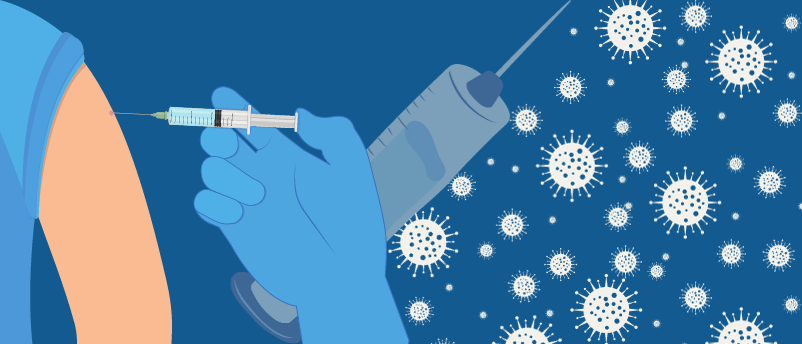
BioTechniques News
Jade Parker

Following their conception in 1796 by Edward Jenner, vaccines have been an important part of healthcare, protecting humans and animals from harmful viruses. Immunization took center stage at the advent of the COVID-19 pandemic as researchers, such as Katalin Karikó and Drew Weissman, and pharmaceutical companies raced to get their mRNA vaccines into circulation to lessen the severity of the virus.
But how has inoculation developed since to fight viruses such as HIV and influenza? Below are five key developments that have been published recently, which highlight how vaccines are being optimized to target both the common cold virus as well as conditions like high cholesterol. Plus, how does the actual design of the vaccine factor into its effectiveness?
Steps toward an HIV vaccine
The search for an HIV vaccine has been going on since 1984 when scientists discovered that HIV caused AIDS. A recent study has made researchers at the National Institute of Allergy and Infectious Diseases (part of the NIH; MD, USA) hypothesized that an effective HIV vaccine may rely on promoting a stronger and longer-lasting immune response from CD8+ T cells. By comparing immune activity in previous HIV vaccine candidates and those who naturally keep HIV from replicating, the team demonstrated that those who received the vaccine previously showed reduced CD8+ T cell activity compared to the natural response of individuals with non-replicating HIV [1].
 Two-pronged strategy boosts mRNA COVID-19 vaccines
Two-pronged strategy boosts mRNA COVID-19 vaccines
Researchers have modified COVID-19 vaccines to produce a stronger immune response in mice.
Antibodies against influenza
Researchers at the University of Pittsburgh School of Medicine (PA, USA) have identified a group of previously unidentified antibodies with neutralizing effects against multiple strains of the flu virus. This discovery has led to the development of a new influenza vaccine that has the potential to protect individuals against a range of strains simultaneously [2].
 The future of lipid nanoparticles and mRNA cancer vaccines
The future of lipid nanoparticles and mRNA cancer vaccines
mRNA vaccines would not have been possible without breakthroughs in lipid nanoparticles, both of which researchers are now developing for cancer therapeutics.
A vaccine against… cholesterol?
A vaccine that blocks a protein – PCSK9 – involved in negatively regulating cholesterol metabolism has shown promise in lowering cholesterol levels in non-human primates. Researchers at The University of New Mexico School of Medicine (NM, USA) developed a twice-monthly vaccine comprised of non-infectious viral particles with PCSK9 fragments stuck to the surface. This prompts the immune system to build a strong barrier against PCSK9, therefore reducing the protein’s pro-cholesterol characteristics [3].
 Experimental vaccine packs a punch against broad range of antimicrobial-resistant strains
Experimental vaccine packs a punch against broad range of antimicrobial-resistant strains
A vaccine shows promising preclinical results in supercharging immune responses to a range of drug-resistant ‘superbugs’.
Optimizing mRNA nanomedicines with X-rays
During the COVID-19 pandemic, mRNA vaccines made waves in the drug discovery and development sphere. The next step is to optimize their effectiveness so they can be utilized across more pressing disease areas. A multi-institutional group of researchers developed a method for investigating how mRNA nanoparticles in nanomedicines vary in size – a factor that can affect drug efficacy. In addition to the method’s ability to separate nanoparticles by their size, it also allows researchers to investigate their structure thanks to X-ray scattering [4].
 The microparticles behind self-boosting vaccines
The microparticles behind self-boosting vaccines
A “smart” vaccine may be on the horizon as researchers develop microparticles that can release their contents at different time points, potentially streamlining the vaccination process.
Epitope vaccine design
Bioinformaticians at Heinrich Heine University Düsseldorf (Germany) have illuminated the benefits of combining epitopes, protein fragments of pathogens, in developing novel vaccines. The team developed a method, termed HOGVAX, for identifying which epitope combinations can guarantee safe immunization and maximize population coverage [5].
The post Drug discovery and development: what’s new in the world of vaccines? appeared first on BioTechniques.
Powered by WPeMatico
